ASUS
Latest

The biggest news at Computex 2019
Our week in Taiwan is coming to a close, and as Team Engadget bids goodbye to the dumplings and beef noodles, it's time to look back on all the news we saw this week. As always, ASUS was the star of the show in its home turf, and this year was especially significant as the company celebrated its thirtieth anniversary. It unveiled attractive new special editions of the ZenBook and ZenFone, as well as a dual-screen laptop.

Pushing a 28-core CPU to its limits: 6GHz and beyond
I'm mesmerized by the way liquid-nitrogen vapor flows across the motherboard. There's something oddly therapeutic about extreme overclocking, especially when the cold air gently touches my skin, making even the tiniest bumps in clock speed the more worthwhile. There's probably no better place to see it in action than Taipei's Computex, where gaming PC memory maker G.Skill gathers the world's best overclockers for its OC World Cup event (with a $10,000 top cash prize). Our previous attempt to tame the 18-core Intel Core i9-7980XE was already rather ambitious, but this year, we decided to go all the way with the massive 28-core, 255W Intel Xeon W-3175X, a rare CPU gem that costs at least $3,000 -- if you can even find one. Our goal was to break the chip's records at the time: pushing it from its 3.1GHz base frequency to beyond 5.68GHz on Cinebench R15, or at least beyond 6.5GHz via the more lightweight CPU-Z validation. With this many cores, it posed a much bigger cooling challenge to run at higher speeds, especially compared to the quad-core i7-7700K I tinkered with the year before.

PC makers are getting better at copying smartphone innovation
For a long time, the PC industry was stagnating. Computer makers had grown comfortable with iterative annual updates to their devices, relying on yearly processor advancements to push consumers to buy new laptops. But recently, things changed. PC makers started borrowing features from smartphones to make their laptops stand out, just as phones keep trying to become more like computers. There were plenty of examples at Computex 2019, but instead of displaying purely imitated features, the PC industry showed it can actually do some of them better.

Intel's 2-in-1 prototype proves it has big plans for dual-screen PCs
Intel surprised us last Computex with unique dual-screen prototypes like its Tiger Rapids device with an e-ink screen. This year, the company had even more concepts to show off at its technology open house. It showcased laptops from its Project Athena program and an intriguing Honeycomb Glacier idea that envisions different ways to make powerful laptops with integrated companion screens. Intel also gave us a glimpse at its new dual-screen prototype called Twin Rivers, demonstrating how its eighth-generation (and newer) processors are able to power such a resource-demanding device. As I played around with this prototype and Intel's other experiments, one thing became clear: The future of PCs is incredibly exciting.
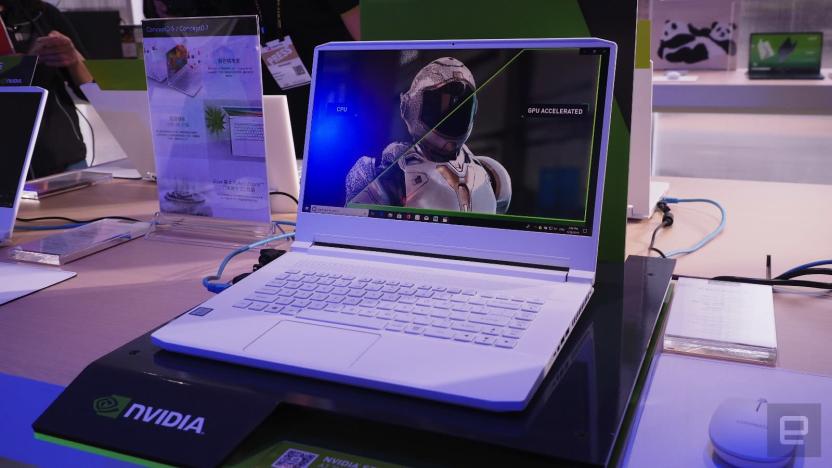
Here are all the laptops getting NVIDIA’s new Quadro RTX graphics
After NVIDIA revealed its Quadro RTX 5000 designed for laptops, a number of manufacturers announced machines that'll pack the new gear. Acer, ASUS, MSI, HP and Razer have all launched machines that offer the most powerful in professional mobile-graphics hardware. Here's a brief run-down of what's going to be available in the near future, and how much you can expect to pay for it. Now, these aren't all the RTX Studio laptops, which NVIDIA is using as branding for all devices that it will supply special drivers for. These are just the models packing, specifically, the new Quadro RTX 5000 GPU.

Watch everything from ASUS' Computex 2019 press event in ten minutes!
ASUS crammed in an awful lot of press, gaming enthusiasts and their own execs to celebrate 30 years in the business, as well as its latest range of laptops, phones, routers and more. While the ZenBook Pro Duo, a dual-screen laptop that holds on to its physical keyboard, might have been the stand-out announcement, there was a lot to get through. We've honed down over an hour of specs, product proclamations and sizzle reels into an even... sizzlier 10-minute recap.

ASUS' latest WiFi 6 router looks appallingly normal
When you look up WiFi 6 routers, you tend to get a bunch of nightmare-inducing designs that resemble gigantic dead spiders. Luckily, brands like Netgear and TP-Link have shown that such products can don a more humble outfit, and ASUS is finally following suit for this year's Computex. The company's freshly announced AiMesh AX6600 kit consists of two RT-AX95Q routers that, to our surprise, look very much like standard networking hubs (remember the Blue Cave?). Most notably, all six antennas are hidden inside each device, with two of them placed diagonally in the middle to boost reception.

ASUS’ redesigned touchscreen trackpad is bigger and more intuitive
It's only been about a year since ASUS introduced the ZenBook Pro with a touchscreen trackpad called a ScreenPad, and the company is already back with an updated version. To celebrate its thirtieth anniversary, ASUS unveiled a slew of intriguing laptops at Computex this year, as well as the ScreenPad 2.0, which will launch on an array of its notebooks as well.

ASUS made the world's first 240Hz portable monitor for gamers
Portable USB monitors are no stranger to Computex, but this year, ASUS brought us something a little more ambitious: the world's first 240Hz portable gaming monitor. The ROG Strix XG17 features a 17.3-inch 1,920 x 1,080 IPS LCD, and it's a high-end affair that offers an adaptive refresh rate of up to 240Hz, along with a 3ms response time. In fact, this is apparently the same speedy matte panel made available on ASUS' Strix Scar III and Hero III laptops. The monitor also comes with built-in stereo speakers, a magnetic kickstand flip cover plus an internal battery. The latter is good for three hours when maxed out at 240Hz, and it supports Quick Charge 3.0 plus USB Power Delivery.
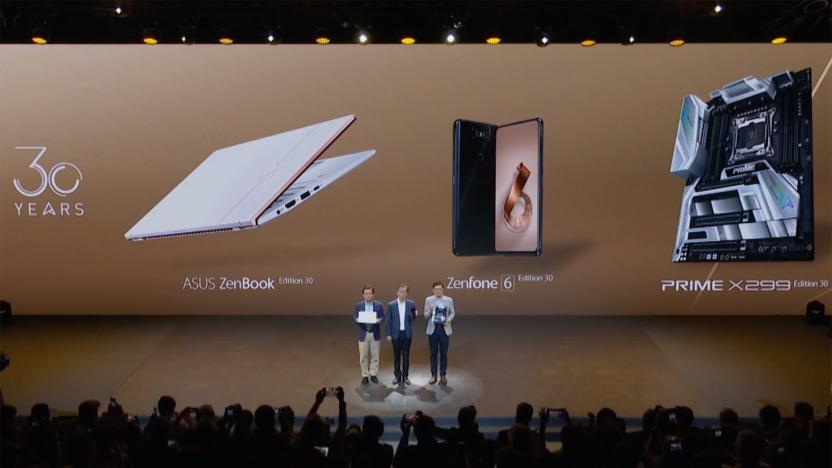
ASUS releases a 30th anniversary edition ZenFone 6 and ZenBook
ASUS turned 30 last month, so it's no surprise that the company saved some special edition products for Computex. What we have here are the ZenFone 6 Edition 30, ZenBook Edition 30 and Prime X299 Edition 30 motherboard -- a fitting trio to reflect the company's expanded portfolio over the decades (though a new Zenbo would have been nice, too). While the hardware isn't brand new, they all feature ASUS' 30th anniversary "A" logo, along with some exclusive looks and specs.

ASUS ZenBook Pro Duo hands-on: A bizarre yet useful dual-screen laptop
Every once in awhile, a briefing pleasantly surprises me. And that's what happened when ASUS brought the new ZenBook Pro Duo to our office in New York last week to give us a preview prior to its Computex debut, today. It's hard to describe this bizarre-looking machine, but think of it as an almost dual-screen laptop. We're not talking about the fully dual-screen Project Precog notebook that ASUS unveiled last Computex, but the Pro Duo feels like the middle stage of an evolutionary process towards that dubiously glorious end.

What to expect at Computex 2019
Computex offers us a chance to check in on the health of the PC market in an era when it was expected to wither on the vine. At last year's show, the PC industry, either through desperation or a newfound confidence, started to innovate once more. We saw designs with multiple screens, attempts to kill off the keyboard and better ideas around portability. It may have taken far longer than expected, but PC makers have realized they can't simply expect people to buy their products just because. So this what we're expecting, and in some cases hoping, to see this year at Computex when we hit the ground in Taiwan next week.

ASUS' ZenFone 6 has a flippable camera and giant battery
It's no secret that ASUS had been struggling in the smartphone world, but following the resignation of its previous CEO, the company has since shifted its focus from the masses to power users, with last year's ROG Phone already hinting at a new direction. That said, ASUS also needs to offer something that's less niche but still stands out from the crowd. This is where the new ZenFone 6 comes in: It's a flagship all-screen device with a flipping camera. It's an implementation once used by the likes of Oppo and Huawei years ago, and more recently, Samsung.

ASUS Chromebook Flip C434 review: More expensive, but why?
For almost two years, the second-generation ASUS Chromebook Flip has been the best Chromebook for most people. It hit the sweet spot of price, performance, design and features in a way few other Chrome OS devices have, and it's still one of the best options on the market. But two years is a long time in laptop-land, so ASUS is releasing the new Chromebook Flip C434 with a bigger screen, newer processor and higher asking price. At $579, it costs a full $100 more than its predecessor, and it's not immediately obvious what you're getting for that extra cash. That makes it a tougher sell, especially when there are so many inexpensive Chromebooks on the market. I called the last Flip "the king of Chromebooks," but it's not a foregone conclusion that the latest one will keep that title.
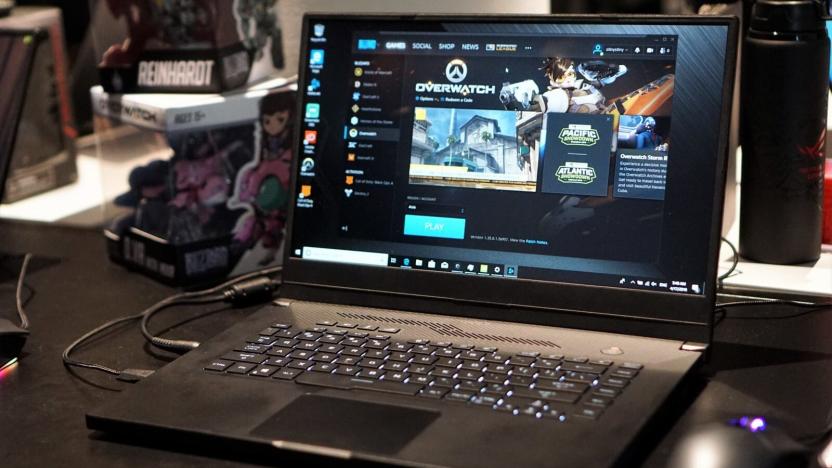
These gaming laptops pack the latest Intel and NVIDIA hardware
If you prefer your PC gaming in portable form, you're enjoying an embarrassment of riches right now. Intel has unveiled gaming-friendly 9th-generation Core laptop processors, while NVIDIA has unveiled GTX 16-series mobile GPUs that promise solid performance without giant budgets (or giant coolers). That also means a lot of PC makers introducing systems, though, and that's a lot to wade through if you're in the market. Don't worry -- we've rounded up some of the bigger introductions to help you keep track of what's new.

ASUS' Strix III gaming laptops take cues from BMW's design gurus
With last year's ROG Strix II notebooks, ASUS finally gave us thin screen bezels. Now, they're taking style tips from BMW Designworks. The new Strix Scar III and Hero III are inspired by the "Face Off" concept, a joint project between ASUS and BMW's team meant to envision a next-generation gaming laptop. That led to the sleek raised ridges on the backs and sides of the new laptops, as well as the ROG Keystone, an NFC device that can unlock secret encrypted storage.

ASUS' thin Zephyrus gaming laptops get new CPUs, GPUs and sturdy cases
For 2019, ASUS' Zephyrus gaming laptops are getting some useful improvements: Intel's 9th generation CPUs (which debuted this morning); NVIDIA's latest RTX graphics; and incredibly fast 240Hz displays. Oh yes, and they're still some of the thinnest gaming notebooks around. It's not just about spec bumps, either: ASUS also completely revamped the 15-inch Zephyrus S and M, while also debuting a new lower-cost G line.
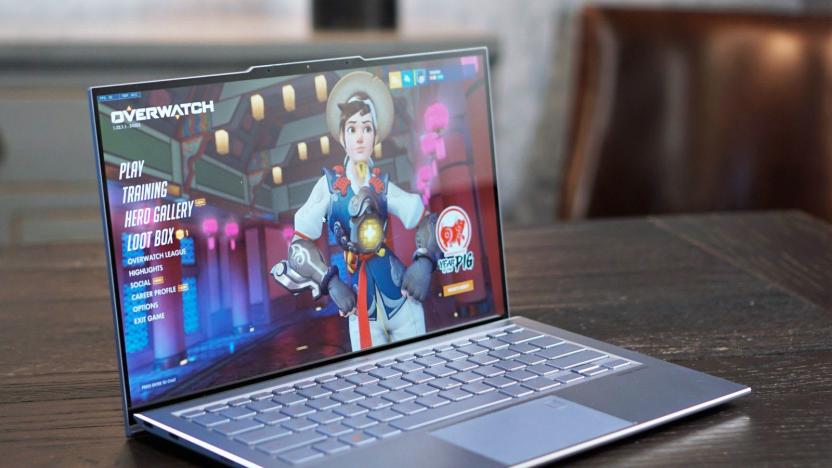
ASUS' gamer-friendly ZenBook S13 is now available
After several months of anticipation, the ASUS ZenBook S13 is finally available from most major retailers starting at $1,399. We loved the ultraportable the first time we got our hands on it back in January when we found out the lightweight laptop manages to pack quite a bit of power. It sports a dedicated NVIDIA GeForceMX150 graphics card and 8th Gen Intel Core i7 CPU, making it a legitimate option for gamers on the go.
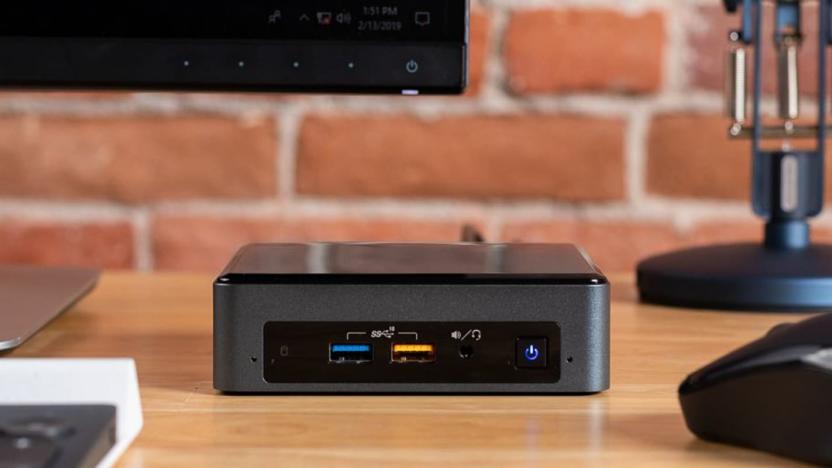
The best mini desktop PCs
By Thorin Klosowski This post was done in partnership with Wirecutter. When readers choose to buy Wirecutter's independently chosen editorial picks, Wirecutter and Engadget may earn affiliate commission. Read the full mini desktop PCs guide here. If you're shopping for a desktop computer rather than a laptop because you prefer to work at a monitor, keyboard, and mouse, consider a mini PC. They're powerful enough for most people and take up much less space than a full-sized desktop computer. The Intel NUC8i5BEKPA1 is the best because it strikes a balance of cost, processing power, and compact design. Intel offers a few different NUC configurations, many of which don't come with memory, storage, or an OS. But for people who want a prebuilt PC with Windows 10 already installed, we recommend the model with a quad-core Intel Core i5-8259U processor, 8 GB of RAM, and a 256 GB solid-state drive. Every NUC has four USB ports, a Thunderbolt 3 port, a microSD port, and an HDMI port. That amounts to the same power you'd get from something like an ultrabook or a comparable business laptop for about half the price (though you do need to provide a monitor, keyboard, and mouse). A NUC is less powerful and upgradable than a full-sized desktop PC, but it takes up a tiny fraction of the space; that size is why you buy a NUC. You can easily upgrade the storage and memory through a removable panel, and while the NUC's fans are loud, we never found them distracting. If you're comfortable installing your own memory, storage, and OS, you can save a decent chunk of money with the barebones version of this NUC, which we talk about below. If you only need a computer for browsing the web and basic productivity work, the Asus Chromebox 3 is a good value. Thanks to Google's Chrome OS, the Asus Chromebox 3-N017U is faster than a $250 Windows PC at browsing the web, basic word processing, and watching movies. Unlike a Windows or Mac computer, a Chrome OS device can't use desktop apps. In fact, the app you'll use for almost everything is the Chrome web browser, and you'll have to be connected to the internet for most tasks. Though the Chromebox does support Android apps, we found those clunky and unpleasant to use with a mouse. If you prefer using macOS, get the Apple Mac mini (2018). The base model, which we recommend for most people, has a quad-core Intel Core i3-8100 processor, 8 GB of memory, and a 128 GB SSD. The Mac mini is larger and more expensive than the NUC and has less storage for the money. But it runs silently, and the desktop-class i3 processor is about as fast as the NUC's mobile i5 CPU. (You can customize the Mac mini with faster six-core processors and more memory and storage, but it's expensive.) The Mac mini has four Thunderbolt 3 ports, more than any mini PC we tested, as well as HDMI, two USB 3.0 ports, Ethernet, and a headphone jack. Unlike many of its Windows counterparts, the Mac Mini doesn't have any unnecessary preinstalled software, and macOS comes with useful software for editing documents, spreadsheets, video, photos, and audio, making it easier than Windows to set up and start using immediately. If you prefer to have more control over the parts in a PC, or if you don't need a Windows license, you can save money buying a barebones mini PC and providing your own storage, memory, and operating system. The Intel NUC8i5BEK is identical to the NUC8i5BEKPA, but since it doesn't have storage, memory, or Windows installed, it costs about half the price. Even after buying memory, twice the amount of storage, and Windows 10, the barebones NUC is cheaper than the prebuilt option.

ASUS releases fix for ShadowHammer malware attack
ASUS may have inadvertently pushed malware to some of its computers through its update tool, but it at least has a fix ready to go. The PC maker has released a new version of its Live Update software for laptops that addresses the ShadowHammer backdoor attack. It also promised "multiple security verification mechanisms" to reduce the chances of further attacks, and started using an "enhanced end-to-end encryption mechanism." There are upgrades to the behind-the-scenes server system to prevent future attacks, ASUS added.







